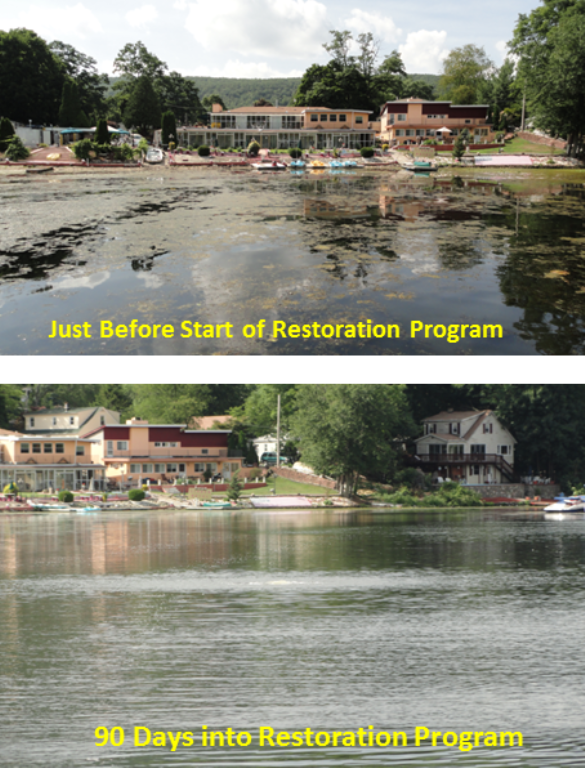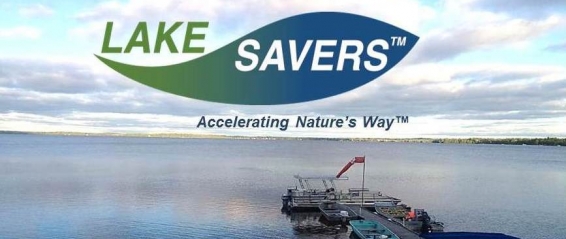4 Michigan Lakes Lead the Way in Fight Against Eurasian Milfoil & Harmful Blue-Green Algae
Kalamazoo, Michigan (PRWEB) February 28, 2013
Studies conducted on four Michigan Lakes are providing evidence that a break-through, all-natural technology quickly and substantially reduces nutrient overloading – the root cause of explosive invasive weed growth and harmful blue-green algal blooms.
The independent studies conducted by Restorative Lake Sciences, LLC on Indian Lake, Paradise Lake, Austin Lake, and Keeler Lake are the most comprehensive analyses ever performed of large-scale use of laminar flow Lake Bottom Aeration and biological augmentation in severely impaired lakes.
According to limnologist Jennifer Jermalowicz-Jones, “This technology has been a highly effective tool for preventing severe trophic shifts in impaired lakes. In most cases, the benefits have been universal and consistent among sites, providing an increase in dissolved oxygen and water clarity, a decrease in nuisance algal blooms and organic matter, and may also be decreasing sediment and water column nutrient loads.““Though we’ve witnessed this happening on all the lakes we’re restoring, we are thrilled to have independent scientific data that proves it works” says Dr. William Bledsoe of Lake Savers LLC. 
The studies provided baseline water quality analyses and measured the decrease in organic sediment, phosphorous, excess weed growth and algal blooms, and overall water quality after installation of the chemical-free technology.
On Indian Lake there was a 2 foot reduction in organic sediment (“muck”), a 35% reduction in Eurasian Watermilfoil, a significant reduction in blue-green algae, and a 2 foot increase in water clarity over two summers. On Austin Lake after only 3 months of operation there was a 63% reduction in Milfoil and a 9 inch reduction in organic sediment. On Keeler Lake there was a 48% reduction in Curly-leaf Pondweed, and a significant reduction in sediment phosphorous after only one year. On Paradise Lake Eurasian Watermilfoil was reduced approximately 40% in only 3 months, and 2012 was the first season with no dense canopy of Milfoil covering the surface of the 400 acre West Bay treatment area.
When asked about the remarkable results Lake Savers President John Tucci explained “what we’re doing is accelerating the lake’s natural ability to process phosphorous and other nutrients into the fish food chain and away from weed and algae growth. Laminar flow Lake Bottom Aeration is the starting point for this fundamental shift in the biology of the lake. In essence, we’re restoring the lake’s natural capacity to keep itself healthy and reduce the negative impacts of excess nutrient loading from the watershed.”
Chemical Free Lakes
The remarkable success of this all-natural approach provides convincing evidence for chemical free lakes. According to George Hartley, former Water Quality Manager for Keeler Lake, “for about 15 years prior we had been using about $10,000 per year of chemicals for treatment of weed control. What we were actually doing all this time is putting a bandage on a major problem, without resolving the problem itself. We were killing weeds with chemicals and at the same time contributing to the already excessive muck problem that has persisted on our lake for many years, killing weeds that die and create more silt build up on our lake bottom. Not even coming close to actually resolving a problem.”
It’s also cost-effective. As opposed to expensive yearly chemical treatments which typically increase in dosage and cost over time, and exorbitantly expensive dredging projects, this Whole-Lake Systems’™ approach typically costs less than $2.00 per day per property owner.
That’s good news for lake communities. It’s the best news yet for the thousands of impaired lakes in North America. “We believe nature always has the best answer” says Dr. Bledsoe. “With lake restoration this means restoring the lake’s inherent capacity to turn phosphates into fish.”
























